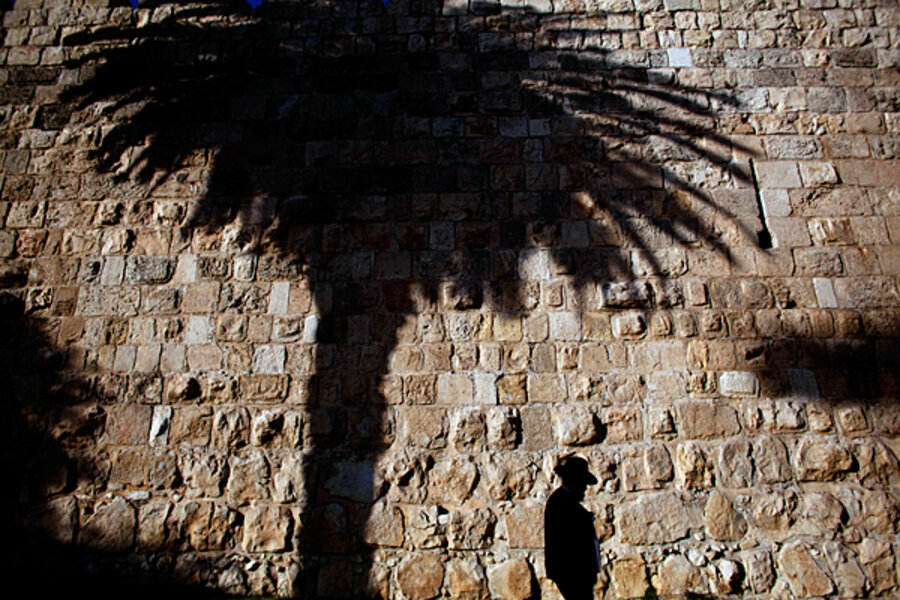Ultra-Orthodox insider invites outsiders in through the big screen
Loading...
| Tel Aviv
Israel’s ultra-Orthodox, with their bobbing side curls and modestly dressed women, are no strangers to the silver screen.
But rarely, if ever, have they been portrayed by one of their own.
Rama Burshtein has surprised more than a few people – herself included – with the success of her first feature-length film, “Fill the Void,” which won seven of Israel’s 12 Academy awards, including best director. The intimate portrait of love, family, and community in the ultra-Orthodox world makes its US debut this weekend with premieres in New York and Los Angeles.
While Israeli films and TV shows have increasingly offered glimpses into Orthodox Judaism, they tend to be directed by outsiders and involve characters who feel constricted by the community and are wrestling with their faith – or are even looking for a way out. Some two decades after finishing film school and leaving her secular life to become a strictly observant Jew, Mrs. Burshtein decided it was time for a new window for secular people to peer into ultra-Orthodox life.
“I think people were curious about this community, but it’s like you’d be curious about what happens at the Vatican, or what’s happening in Japan, or any other exotic place,” she says in the Tel Aviv offices of Norma Productions, where she spent a year on casting alone. “It’s not about true interest in the community or its beliefs, it’s more into their dress codes, into the atmosphere of what it seems like from the outside.”
But Fill the Void definitely penetrates well beyond the trappings of the community, exploring the heart of an 18-year-old girl, Shira. When the movie begins, she is eyeing her prospective match in the supermarket, but she soon finds herself facing an unexpected marriage proposition when her older sister dies in childbirth. Her parents, eager to keep their new grandchild in the family, ask Shira to consider marrying her sister’s widower.
Shira is free to make her own choice, says Burshtein, who describes true freedom as the ability to know what is right and commit to it, rather than trying all the options. But others see Shira contending with strong pressure from her family, rabbi, and larger community.
But Burshtein seems less concerned about what people see through this window of hers than with the fact that it gives them a very human picture of a largely unknown world.
“It’s a mixture of a lot of feelings and a lot of characters and a lot of virtues and faults. It’s just human. That was my main thing. I was just trying to be honest. I’m not trying to sell anything. I’m trying just to say, just look at us, just look, just let us be there, as part of humanity and not as something weird and unreachable and so far away and primitive,” she says. “And I think we were very successful.”








